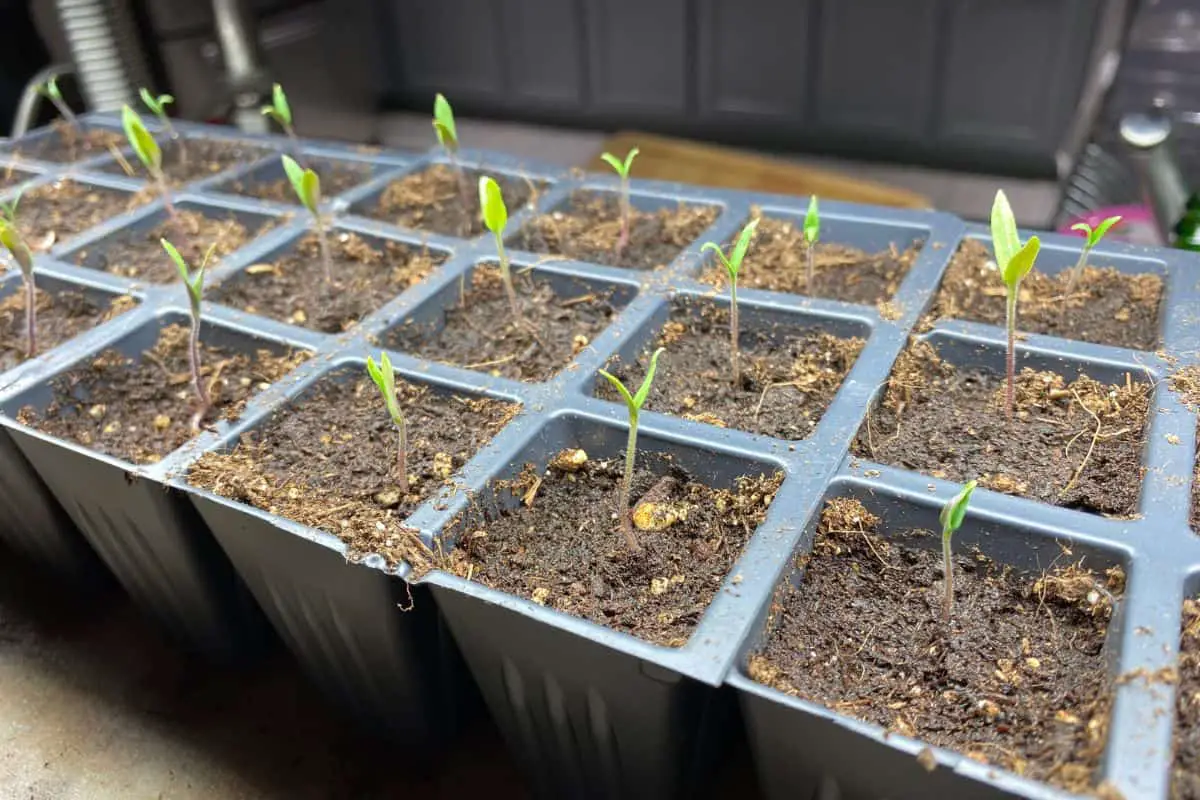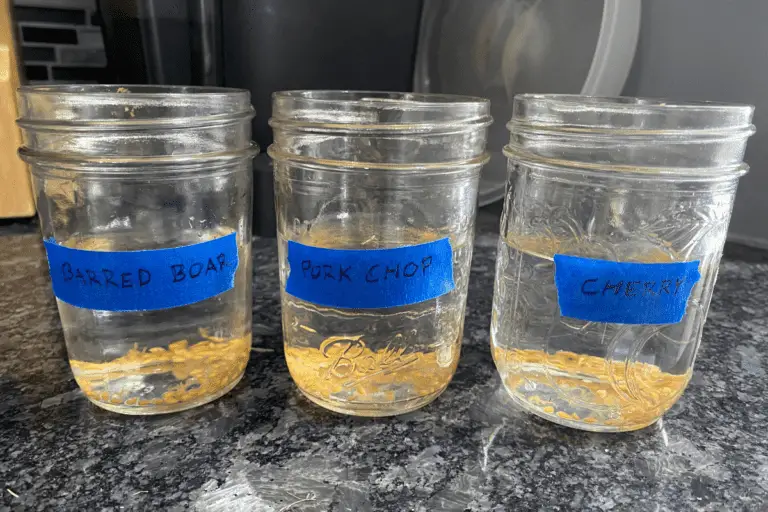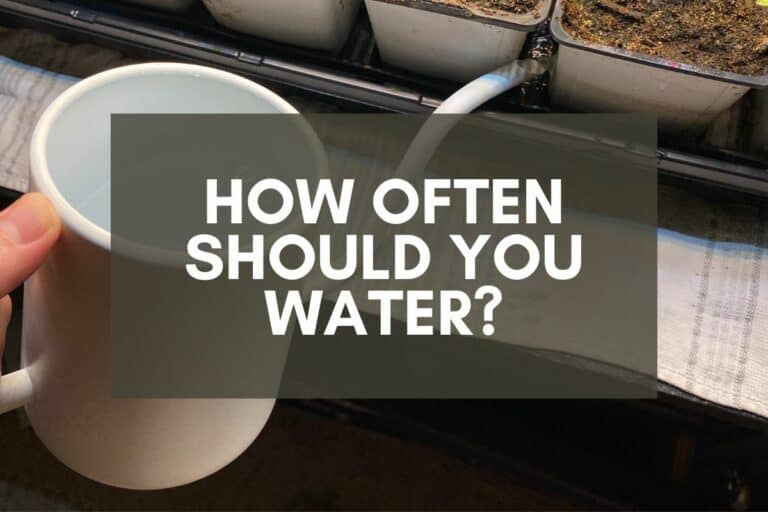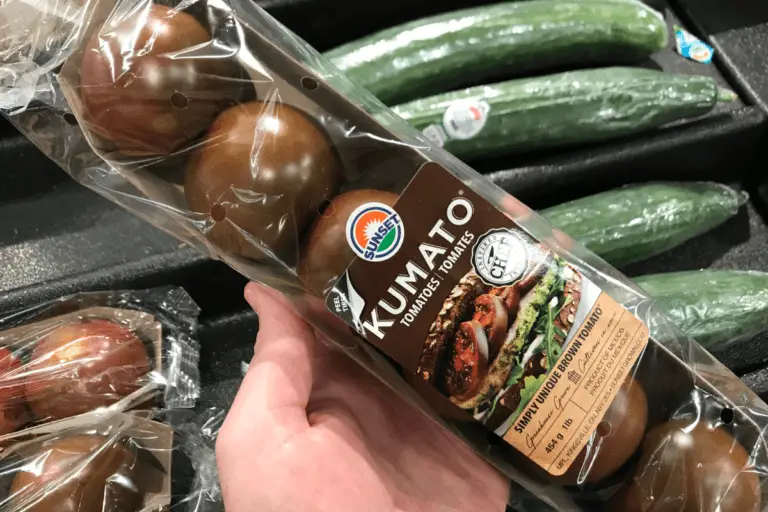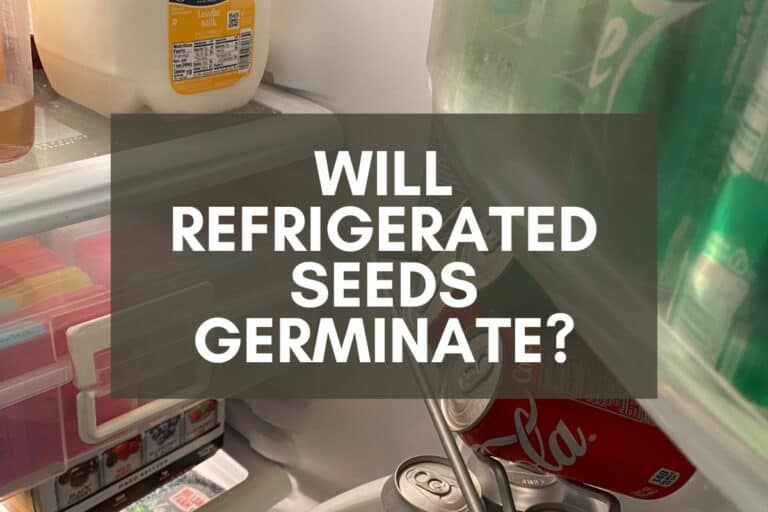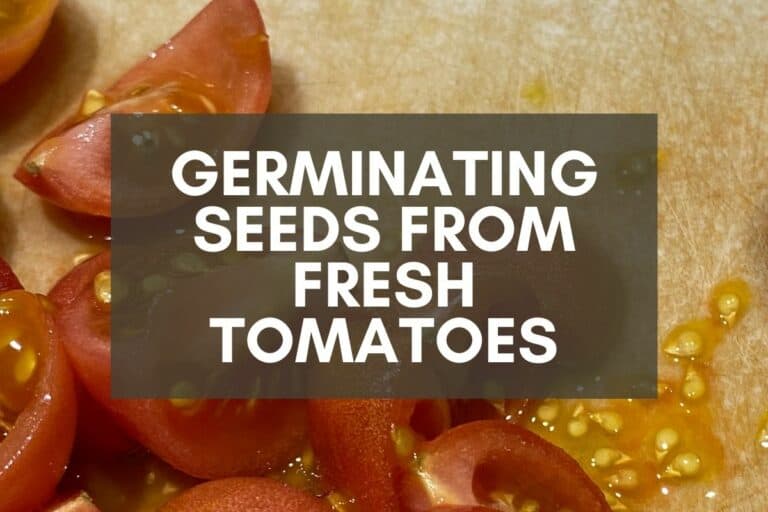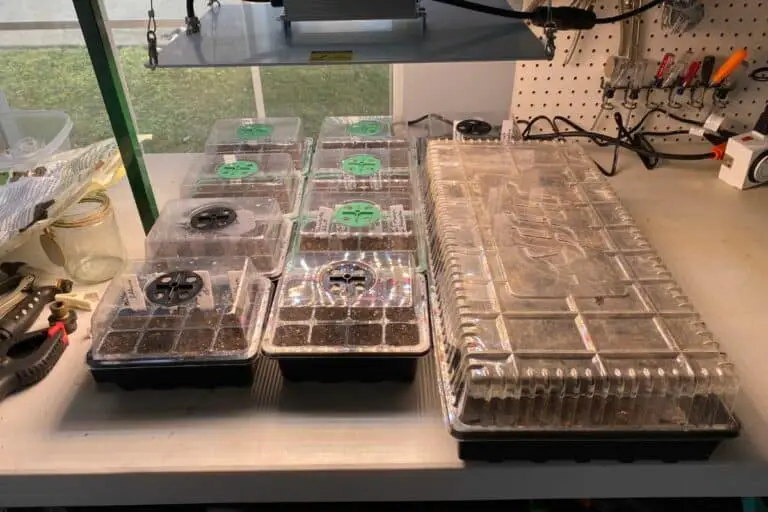Tomato Seedlings: Do They Need Heat After Germination?
If you’re relatively new to growing your own tomatoes from seed, you’ve probably heard how essential warmish soil is to good germination rates.
Cold soil will encourage seed dormancy since seeds are genetically programmed to remain inert during the winter, which is why it’s important to germinate tomato plants in soil that’s at least 65 F (C).
But what about tomato seedlings, both the small, newly-germinated ones and the larger seedlings that have had a few weeks to mature? Once they’ve germinated, do tomato seedlings need heat?
Tomato seedlings do not need heat after germination unless soil temperatures dip below 60°F (15°C). Tomatoes grow best when daytime temperatures are 70 to 85°F (21 to 29°C) and nighttime temperatures are 60 to 70°F (15 to 21°C), so seedlings will benefit from added heat in cold, wintry conditions.
What this means is that tomato seedlings technically don’t need any additional heat or warmth once they’ve germinated. No heat mats. No seed tray domes. No incandescent bulbs.
But as I’ve noted, tomato seedlings thrive when soil temperatures are no colder than 60°F (15°C) and no warmer than 85°F (29°C). If the soil gets very chilly, tomato seedlings will experience slowed growth. If the soil gets exceptionally warm, the seedlings will get stressed.
The trick with tomato seedlings is to keep the soil warm enough to encourage productive growth. If, like me, you start your seedlings during the colder winter months in order to get a jump start on spring planting, you’ll need to ensure that they’ve got all the warmth they need to thrive during even the coldest months.
My goal with this article is to help you navigate the fine line between not doing enough for your plants (which could lead to stunted growth) and doing too much for them (which could result in unnecessary anxiety and wasted time).
Simply put, you don’t need to agonize over soil temperatures, but you do need to give some thought to how you’ll keep your seedlings warm enough if external temperatures aren’t in that ideal range.
Do Tomato Seedlings Need to Be Kept Warm?
I germinate and grow all of my tomatoes in a detached garage here in North Texas. Unlike New Jersey, where I lived for many years, winters in Texas aren’t as harsh or as frigid as they are in other regions. It’ll get plenty cold here, but we don’t get subzero temperatures.
Unfortunately, my detached garage doesn’t provide much protection against cold weather, so the temperatures in my garage are regularly below 45°F (7°C). This clearly isn’t an ideal environment for nurturing new tomato seedlings.
And yet my seedlings thrive each year, despite the cold garage they’re growing in. This is due to the fact that I’m maintaining soil temperatures that are ideal for new seedlings.
So if you’ve been wondering whether or not your tomato seedlings need to be kept warm after germinating, let’s be clear:
Once tomato seeds have germinated and the plant’s cotyledons (the first pair of leaves) have emerged from the soil, heat mats are no longer necessary. However, tomato seedlings need additional warmth if grown in a cold garage or greenhouse since soil temperatures need to be kept above 60°F (15°C).
Simply put, you’ll want to think about the temperatures in your growing area (both daytime and nighttime temperatures) and determine whether or not your plants need extra warmth.
This is particularly important in the week or two following germination when the seedlings are youngest and most vulnerable. At this point, tomato seedlings have 2 cotyledon leaves, but they may or may not have their first pair of true leaves, and their root system will be relatively undeveloped.
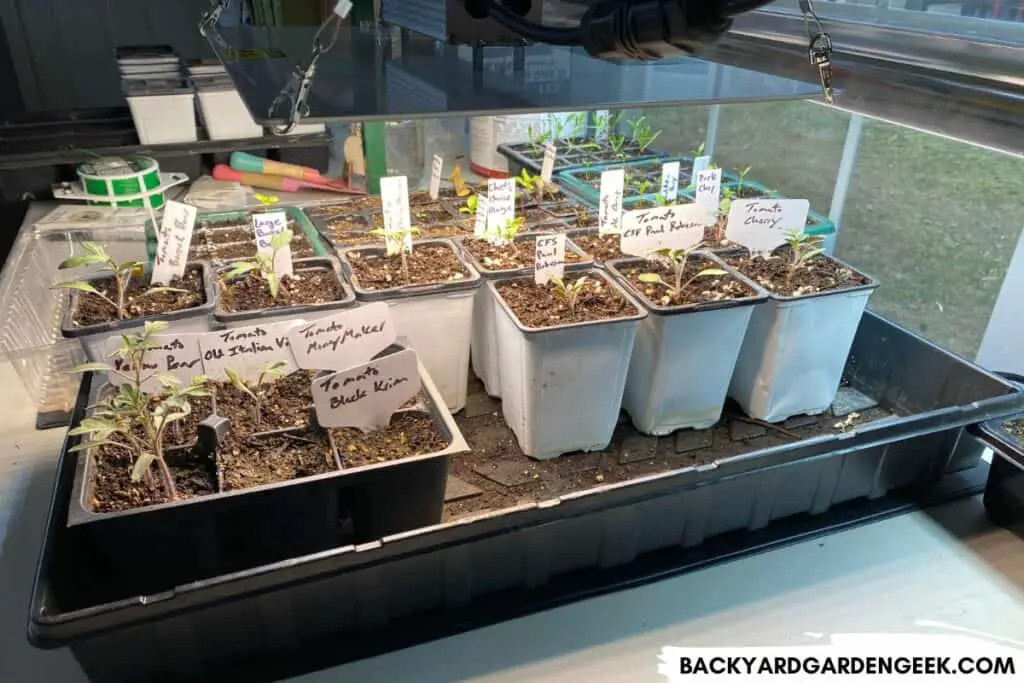
If it’s cold in my detached garage–and it almost always is during January, February, and March–I’ll keep the heat mats running, and I’ll make sure I’ve got a grow light situated 1-2 inches (2-5 cm) above the seedlings.
I use an LED grow light panel, so it doesn’t produce much heat, but when used in conjunction with my Vivosun heat mats, these provide enough of a temperature boost to keep the soil within an acceptable temperature range.
But let’s say that you’re able to grow most of your seeds indoors in a relatively climate-controlled space, maybe inside your house or in an attached garage that stays much warmer than outside temperatures. In these situations, you likely wouldn’t need much, if any, additional heat for your plants, so be sure to turn off your heat mats as soon as your seeds have germinated.
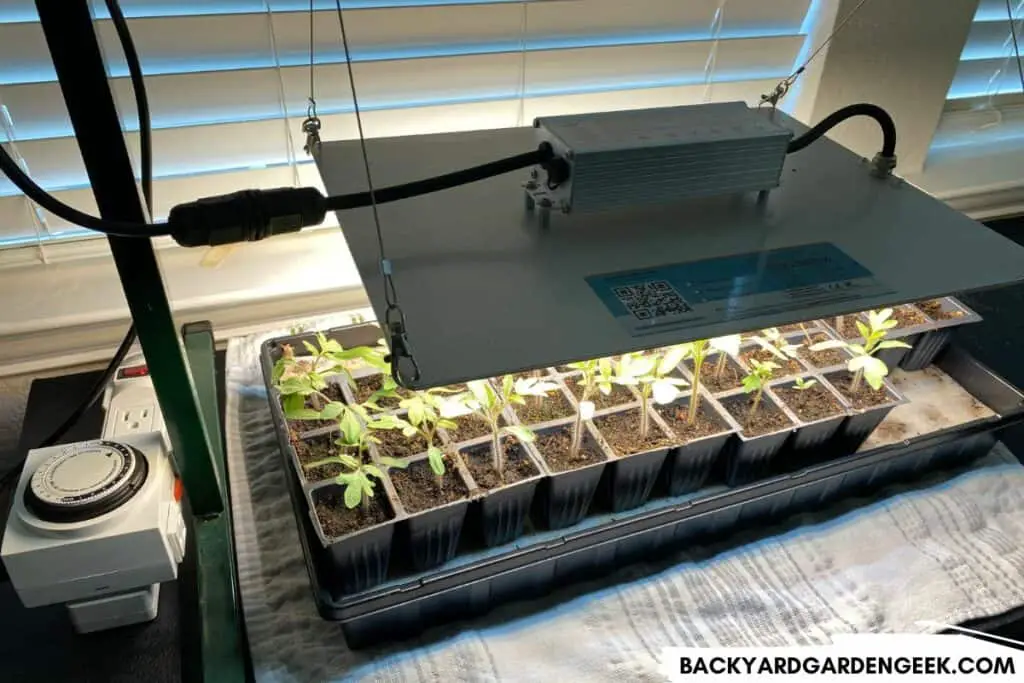
But let’s you’re on the fence about whether or not your plants need additional warmth. Should you find yourself in that position, here’s a simple solution: Grab an indoor/outdoor thermometer, place it in the space where your plants are growing, and leave it there for 15-20 minutes. If the thermometer reads 65°F (18°C) or above, don’t add any additional heat. If it’s below that temperature, place a heat mat underneath your seedlings to warm them up a bit.
When Should I Turn My Heating Pad Off?
I’ve experimented with tomatoes quite a bit over the years: germinating freshly harvested seeds, germinating seeds using only water, planting whole tomatoes, harvesting hybrid tomato seeds, and even trying to germinate canned tomato seeds (not surprisingly, that didn’t work at all!).
Whenever I’m growing tomatoes from seed, I always use heat mats to germinate my seeds, especially if it’s cold outside.
But have you ever wonder: When should I turn if off?
Heat mats can be turned off the moment tomato seeds have germinated and their cotyledons have emerged from the soil. However, tomatoes won’t thrive when the soil is colder than 60°F (15°C), so it’s best to keep heat mats running whenever tomato seedlings are exposed to cold temperatures.
Most years, I germinate all of my seeds in my detached garage, which remains chilly until spring weather arrives. Because of this, I never turn the heat mats off since the seedlings can use the additional warmth.
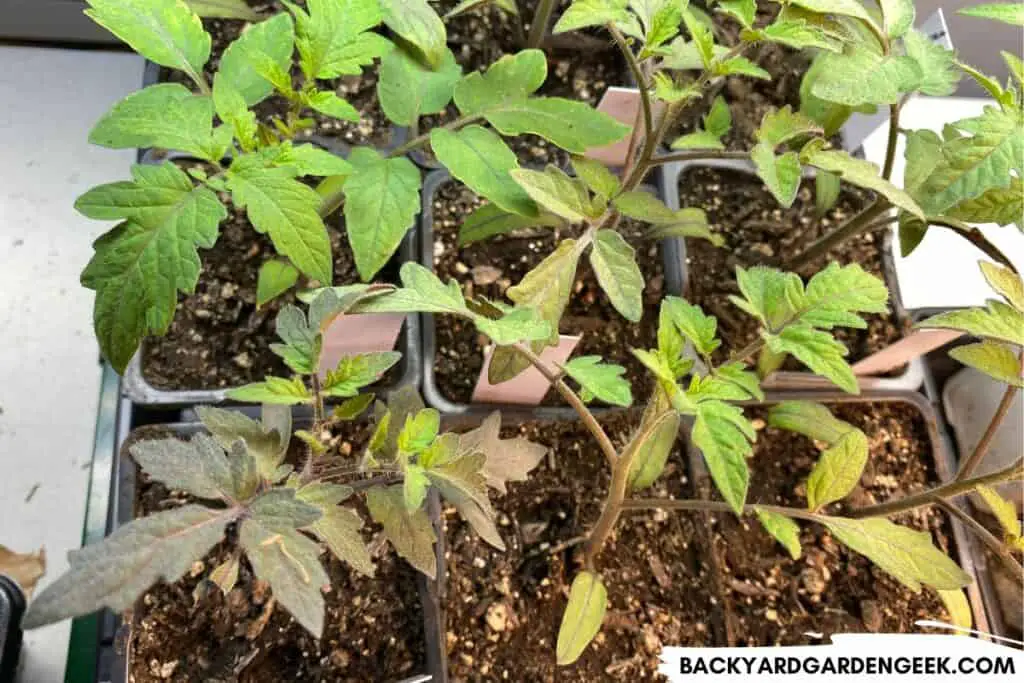
But there have been 1 or 2 years where I’ve germinated seeds indoors at room temperature. In those instances, I’ve used heat mats until I’ve seen proof of germination (i.e. the tiny seedling poking out of the soil), then I’ve turned them off since the temperature inside my house is usually around 72°F (22°C).
Here where I live in Texas, we’ve actually got 2 tomato growing seasons: spring (roughly March-May) and fall (September-November). We can’t grow tomatoes during the hot summer months since the temperatures are just too scorching, but once fall hits, the plants do great, so I usually start new tomato seeds in July or early August. I’ll use a heat mat if starting my seeds indoors, but I’ll turn it off the moment I see signs of life.
Do Tomato Seedlings Need Full Sun?
I’ve covered my approach to heat mats in this article, but I’d like to finish by saying a few words about sunlight.
Although tomato seeds don’t need sunlight to germinate, tomato seedlings need plenty of light, either sunlight or artificial light, to thrive and develop into strong, healthy plants, around 12-18 hours per day.
But you need to be careful when it comes to sunlight: If you take your young seedlings and place them outside for hours on end, chances are you’ll either damage or kill them.
Here’s what I do when it comes to tomato seedlings and light:
I usually keep my seedlings under a grow light for the first 6-8 weeks of their lives.
Beginning around Week 9, I’ll start to transition them into my garden. I’ve seen people suggest elaborate transition schedules where they’ll slowly expose their seedlings to sunlight for an extra 30 minutes each day, but that’s not what I do.
I’ll put my plants outside for an hour or so the first day, then repeat for several days assuming they look okay. After 4-5 days of that, I’ll leave them outside for 2-3 hours, then repeat for several more days. After 2 weeks of slow but steady exposure, my plants are “hardened off” to the sun and wind and ready for planting.
Further Reading
There’s a lot to learn when you’re first growing tomatoes from seed, but if you give it a try, you’ll see just how fun and interesting it can be.
If you’d like to read more about my experiences, check out these related articles:
